7 Common Scalp Issues — And How to Treat Them
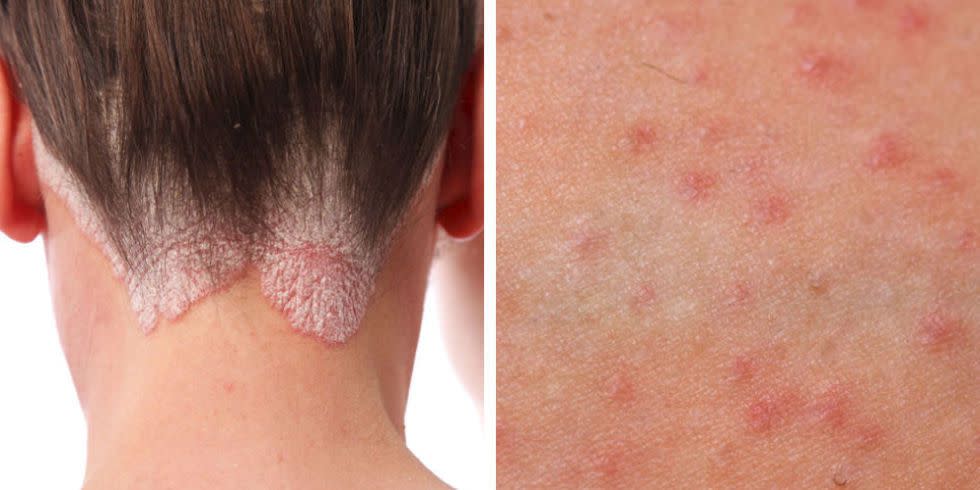
It's never good news when there are white flakes on your shirt and, um, it's not snowing outside. But dandruff is just one of many common scalp conditions that can mess with your daily routine. Thankfully, modern medicine has the answer to keep your scalp looking and feeling good.
Psoriasis: Pink Plaques With a Silvery Scale
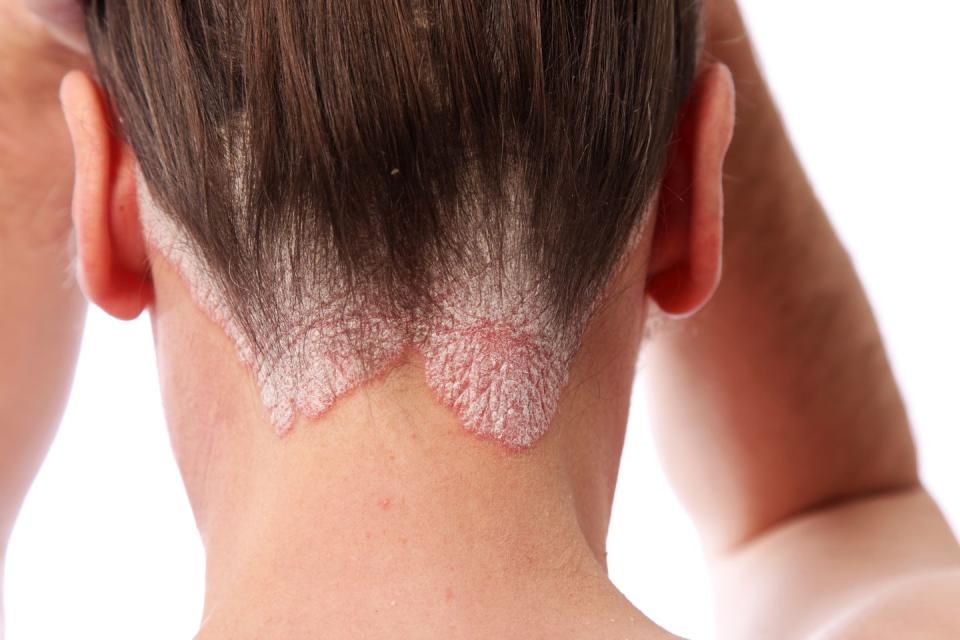
The cause: Not to be confused with cirrhosis (liver damage), this condition affects about 1 to 2% of the general population and anyone can get it, at any age. Thought to be an autoimmune condition where the cells in the top layer of skin are in overdrive, a psoriasis rash is made up of pink plaques with a characteristic silvery scale.
And while it can affect any part of the body from head to toe (including your nails), the scalp kind is one of the most difficult types to treat, according to Dr. Seemal Desai, clinical assistant professor in the Department of Dermatology at the University of Texas Southwestern Medical Center. Why? The build-up of skin cells create scaly, patches that can itch, hurt, crust up, and bleed. Even more terrible: Trauma to the scalp (this means blow-drying and covering grays) can make the situation worse.
The treatment: It's really about relieving symptoms, says Dr. Desai. Most doctors start with steroids, while tougher situations may require injections called biologics that help to suppress what's causing the flare ups. Your derm may also suggest trying an excimer laser, which can work on individual spots that are not responding to other therapies. But you should also take in account your hair care routine, points out Desai. Not shampooing your hair every day may lessen the amount of skin rashes, or a therapeutic oil cream can also do wonders.
Folliculitis: Scattered Pus Bumps
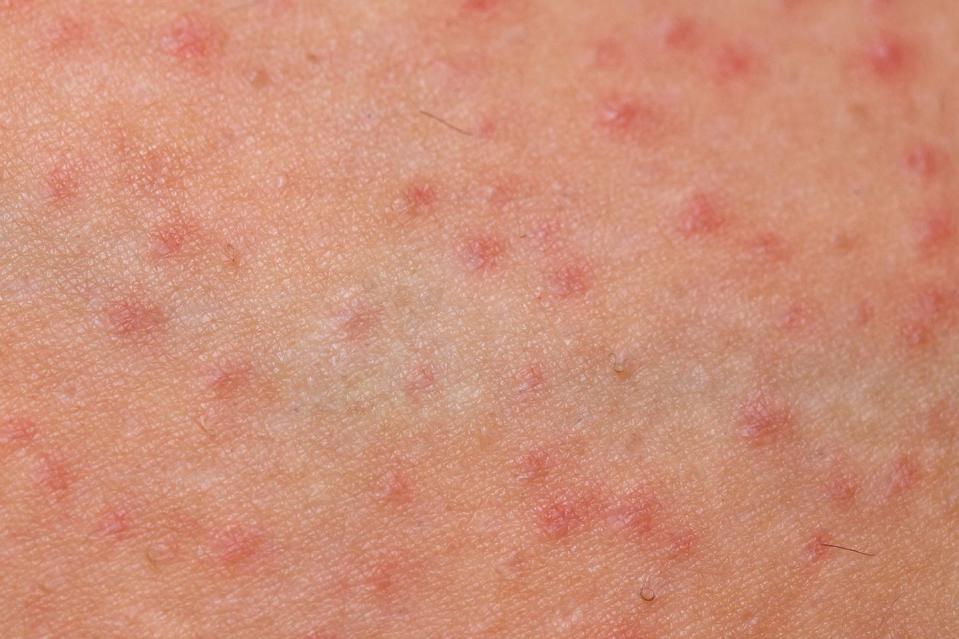
The cause: This is basically inflammation of the hair follicle. It can be caused by a bacteria (most commonly a staph infection) or irritation from shaving, heavy conditioners, potent hair dyes, and excessive sweating. It will mostly likely appear as little pus bumps scattered throughout the scalp that mimic acne, and can be sore.
The treatment: A doctor suspecting folliculitis may perform a culture to check for bacteria. If a microbe is causing your scalp woes, a topical or oral antibiotic will be the best treatment option. "If there isn't an infectious agent present, then anti inflammatory medications, such as steroid creams can be effective'" says Dr. Christine Ko, associate professor of Dermatology and Pathology at Yale School of Medicine.
Seborrheic Dermatitis: Greasy Scale and Dandruff
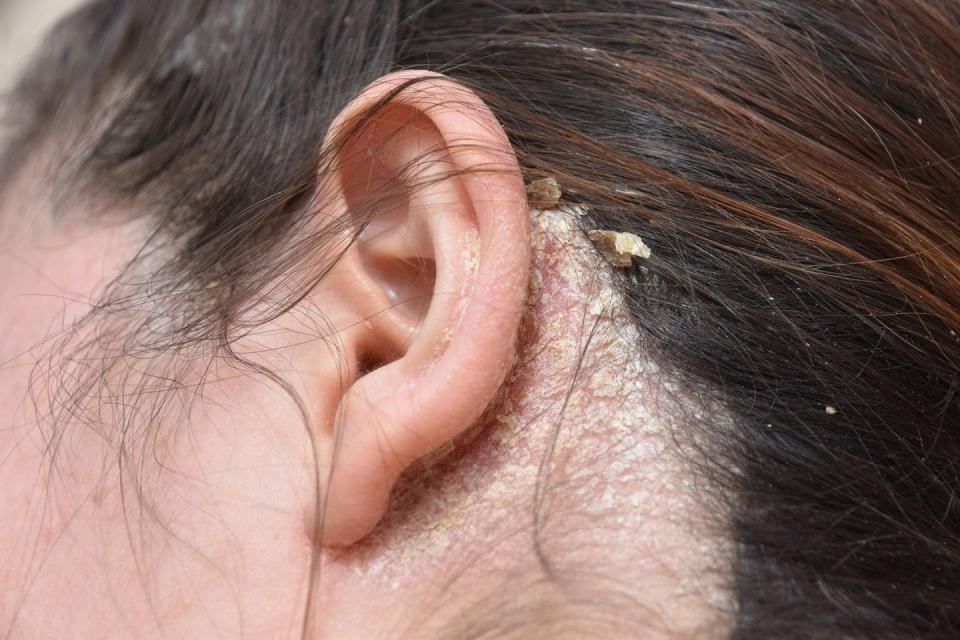
The cause: Seb derm, as most derms call it, is one of the most common scalp conditions. Cradle cap in babies, parlays into red, itchy patches with greasy scale or dandruff in an adult. It isn't contagious, but can be embarrassing. Unfortunately, it often comes and goes with triggers such as stress and seasonal changes - it's worse in winter and early spring. And the face, ears, and chest can also be affected. Although no definitive cause has been identified, a yeast (fungus) called malassezia that is in the oil secretion on the skin, seems to be the most likely culprit. Some predisposing factors include Parkinson's, depression, diabetes, a weakened immune system, and obesity.
The treatment: Dr. Desai recommends treating seborrheic dermatitis early and aggressively to avoid complications such as hair loss. Often a prescription strength anti-yeast shampoo called ketoconazole will do the trick. If flakes are still falling, a topical steroid may be in order.
Alopecia: Hair Loss
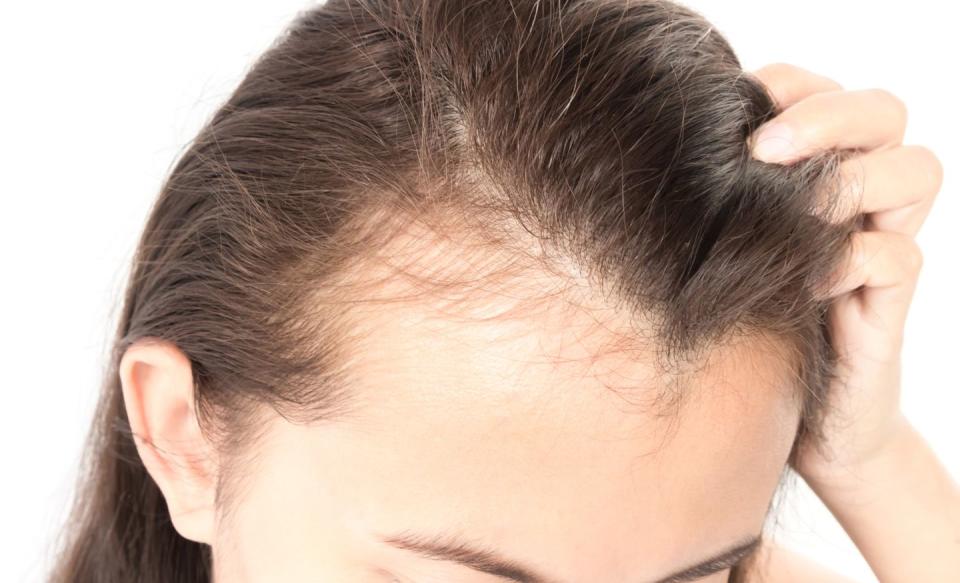
The cause: "Hair loss can be due to a number of different factors, including genetics, medications, inflammation, hormonal abnormalities, and hair fragility," says Ko. Regardless of the cause, it is super distressing. If you notice hair breaking/shedding or bald spots on your scalp, it is important to get evaluated by a health care provider immediately. They almost certainly will run blood work to evaluate for anemia, vitamin deficiency, thyroid abnormalities, hormone levels, and autoimmune markers.
If blood tests check out, other sources of stress such as the death of a loved one, surgery, or a car accident can cause a massive shedding months after the incident. Most of the time, it's just mother nature's way of saying "you're not a kid anymore." Yes, as we linger in that hormonal purgatory between childbearing age and menopause, estrogen levels decrease, and often, so does our hair. It also may be the toll of years of bleaching, dyeing, straightening, perming, and rocking tight, slicked back top knots, ponytails, or braids just catching up to us. The issue of hair loss if obviously complex and takes proper medical attention to figure out.
The treatment: Your doctor is going to want a thorough physical done, so that any medical problems detected can be treated. Underlying scalp conditions such as seborrheic dermatitis or psoriasis should be addressed. In the case of hormonal thinning, there are treatments such a Rogaine, a solution that thickens existing hair, and spironolactone, a pill, which helps to block the male hormones ravaging our system as we tread toward menopause. Eating a well-balanced diet, filled with vitamins such as B12, folate, and biotin are also useful when experiencing hair health woes. Lastly, taking a break from over-processing your hair and rocking more natural styles are definitely encouraged. In extreme cases, hair transplant is an effective option.
Cysts: Fluid-Filled Sacs
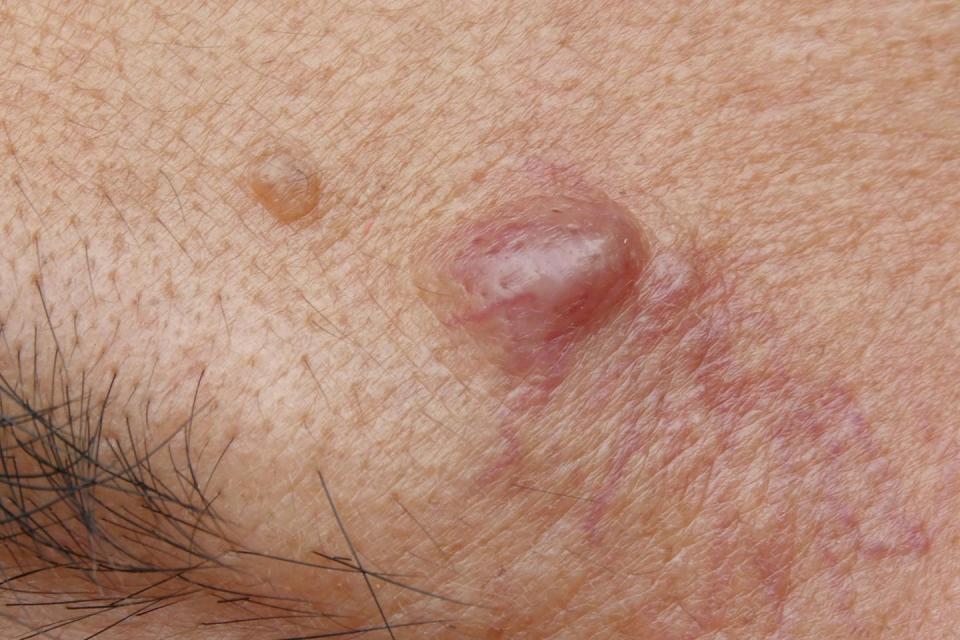
The cause: Like any other organ, cysts can occur on the skin. The good news: Scalp cysts are common, and easy to identify. They are usually marble- or grape-sized fluid-filled sacs that you can feel when your comb or brush runs over it. For the most part, scalp cysts are mostly genetic, benign, and no cause for concern. That being said, in some cases they can get infected or irritated, causing pain and drainage.
The treatment: Leave them alone, or look to a medical professional to have them surgically removed.
Ringworm: Scaly Rash and Bald Spots
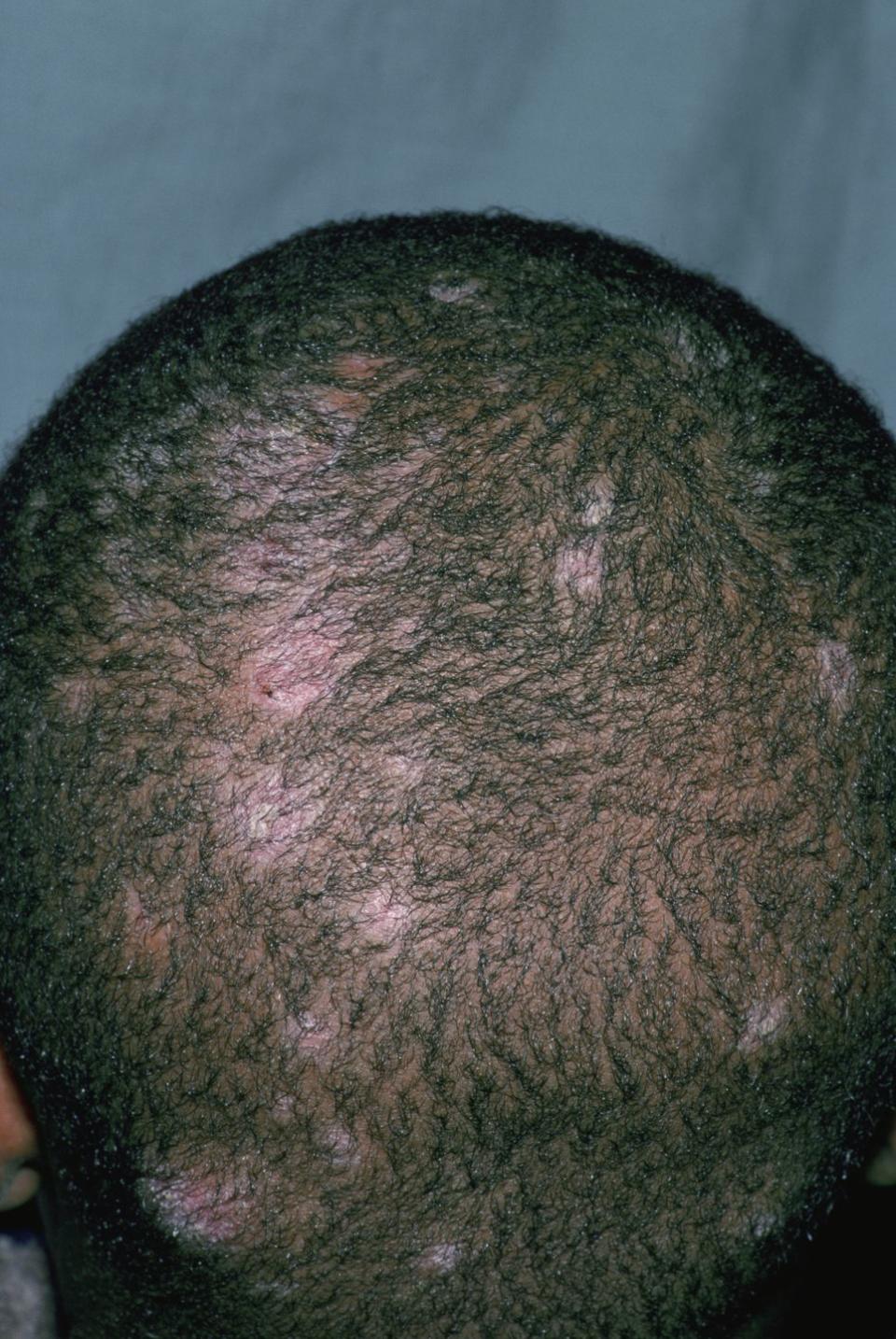
The cause: Also called tinea capitis, it usually happens in little kids but occasionally adults get them too. According to the Mayo Clinic, there a few ways of contracting this fungus: Human to human, animal to human (cats are a common source), and object to human (clothing, towels, bedding/ linens, combs, and brushes). The resulting rash is usually painful and scaly, sometimes even causing enlarged lymph nodes. It also can cause bald spots, broken hairs, and black dots.
The treatment: Taking an antifungal pill usually does the job. Treating or discarding infected sources can help to prevent re-infection.
Allergic Contact Dermatitis: Itchy Redness
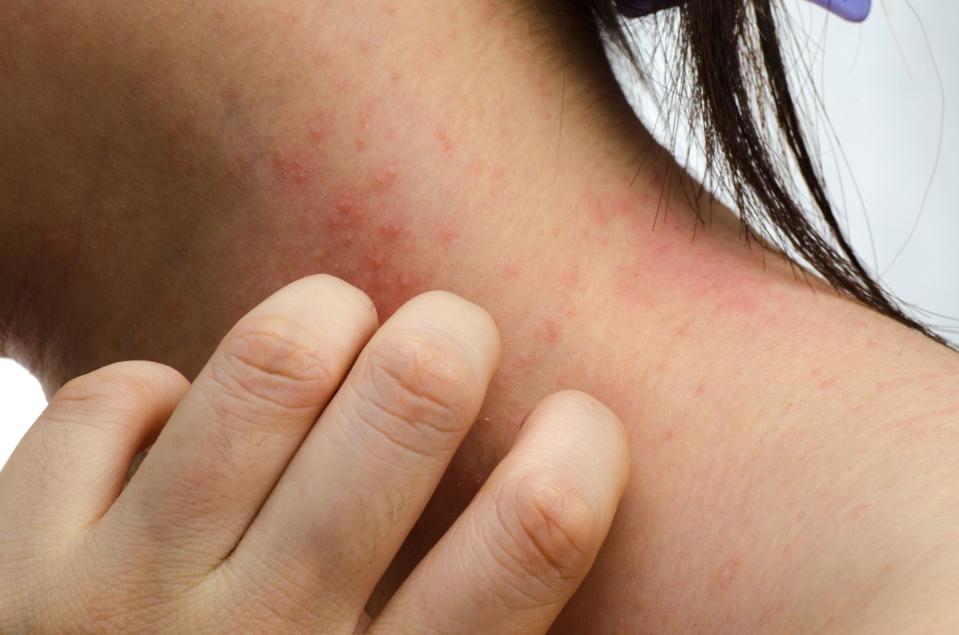
The cause: Paraphenylenediamine (PPD) is a chemical that is widely used as a permanent hair dye, and guess what? It can wreak havoc on the skin. It's also one of the most common causes of scalp allergic contact dermatitis (ACD), with the chemicals/fragrances included in shampoos and conditioners coming in right behind as a close second. ACD can cause extreme itching and discomfort. The good thing is it's usually easy to figure out the cause because of the timing between chemical contact and rash.
The treatment: Identifying the cause, and eliminating it are the most important steps in treating ACD. Using a topical steroid gel, foam, cream, or ointment for two to three weeks will help decrease inflammation and get you back on track.
You Might Also Like

